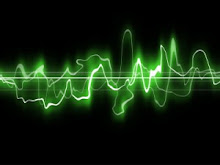Unable to resist so Wagnerian a band name as “Tristania”, I bought this Norwegian sextet’s 1999 album Beyond the Veil some months ago but have only today had the time to really sit down and listen to it properly.
The album opens like some classical oratorio – distant soprano voices singing a chant-like incantation – into which burst break-neck bashings of drums, loud jarring of guitars, and raucous snarling vocals, leaving us with no mistake that we are in the midst of that overwhelming hurricane of sound that is metal.
I’m quickly learning, though, that “metal” is about as helpful a term for explaining what you’re listening to as “curry” is for explaining what you’re eating. Yes, we know it’s hot and fierce, but it tells nothing of the million nuances and flavours that come under its banner.
In this case, it’s gothic symphonic doom metal – something that, it seems, the Scandinavians are particularly good at and, listening to Beyond the Veil, I can certainly see that they deserve their reputation.
The music is, as you would expect, larger than life: intense, dramatic, and full of every type of sound that the music spectrum is capable of producing – frenzies of riffs that seem to be coming from a throng of electric guitars, batteries of percussion, a choir, an orchestra, icy cold operatic phrases from soprano Vibeke Stene soaring over guttural screams from lead singer Morten Veland and the utterly crazy bass of Rune Østerhus.
Its impact is at times overwhelming – dark, full of the gothic doom that gives the genre its name, achieved through drawing on everything it can to add to the drama and magnitude of the sound. Moments of impenetrably intense sound alternate with moments of thin strumming guitars, or hauntingly jangly pianos or harpsichords. Screams from the pits of hell alternate with ancient church chants. Everything makes everything else seem so much more extreme, so much more itself.
The individual tracks on Beyond the Veil all in one way or another show these trademark qualities, and by time you are few tracks into the performance, you know not to rest too easily into the more quiet moments, like the sparse, chilling keyboards that open “Opus Relinque”, or the single, pure “Agnus Dei” that opens “Lethean River”, always only to be swept away by a tidal wave of metallic noise that picks up whatever lies in its path: the choirs, the orchestras, the keyboards.
Simbelmynë is the album’s only really spartan track – a short but wonderfully spooky piece for solo keyboard – I think for an electronically treated piano – sounding like rattling bones dancing a sad, haunted dance before falling back into their grave.
As a long time and ardent disciple of Wagner, it’s probably not terribly surprising that I would be won over by music of this enormity and power, even though, in some ways, its musical structure and style is, if anything, much more traditional than most of what Wagner did. So the daringness of this music lies not so much in its harmonies and melodies and rhythmic lines, but more in the way it pulls out every stop to build its mammoth structures of gothic grandeur; and in the way it brings together worlds of sound, lets them collide, and then revels in the cosmic explosion that it has created.
Beyond the Veil is an album that has unashamedly injected itself with every bit of energy it has been able to lay its hands on. And it just as unashamedly is out to inject you, too, to make you its addict. Give it just half a chance, and it will.
Subscribe to:
Post Comments (Atom)


No comments:
Post a Comment